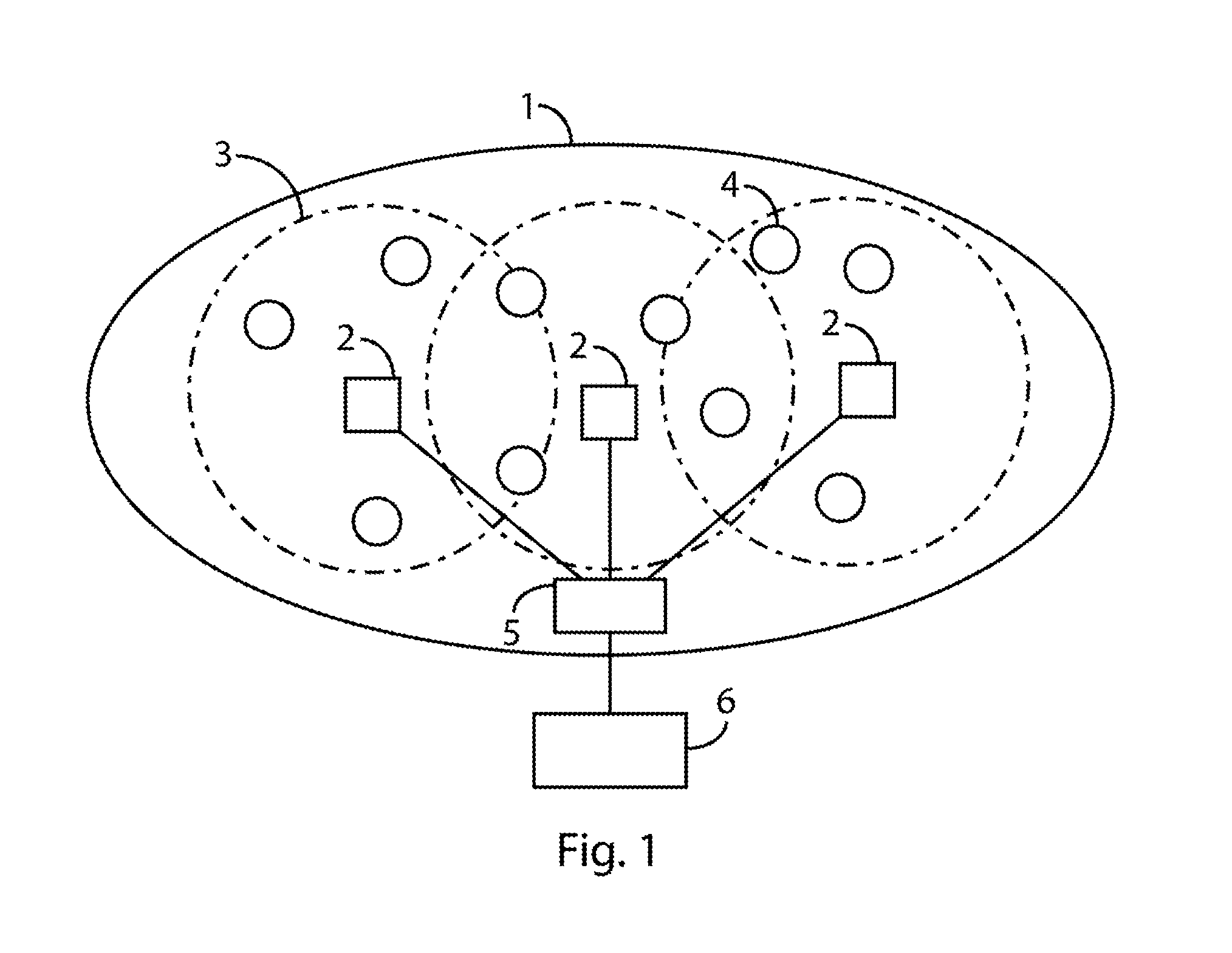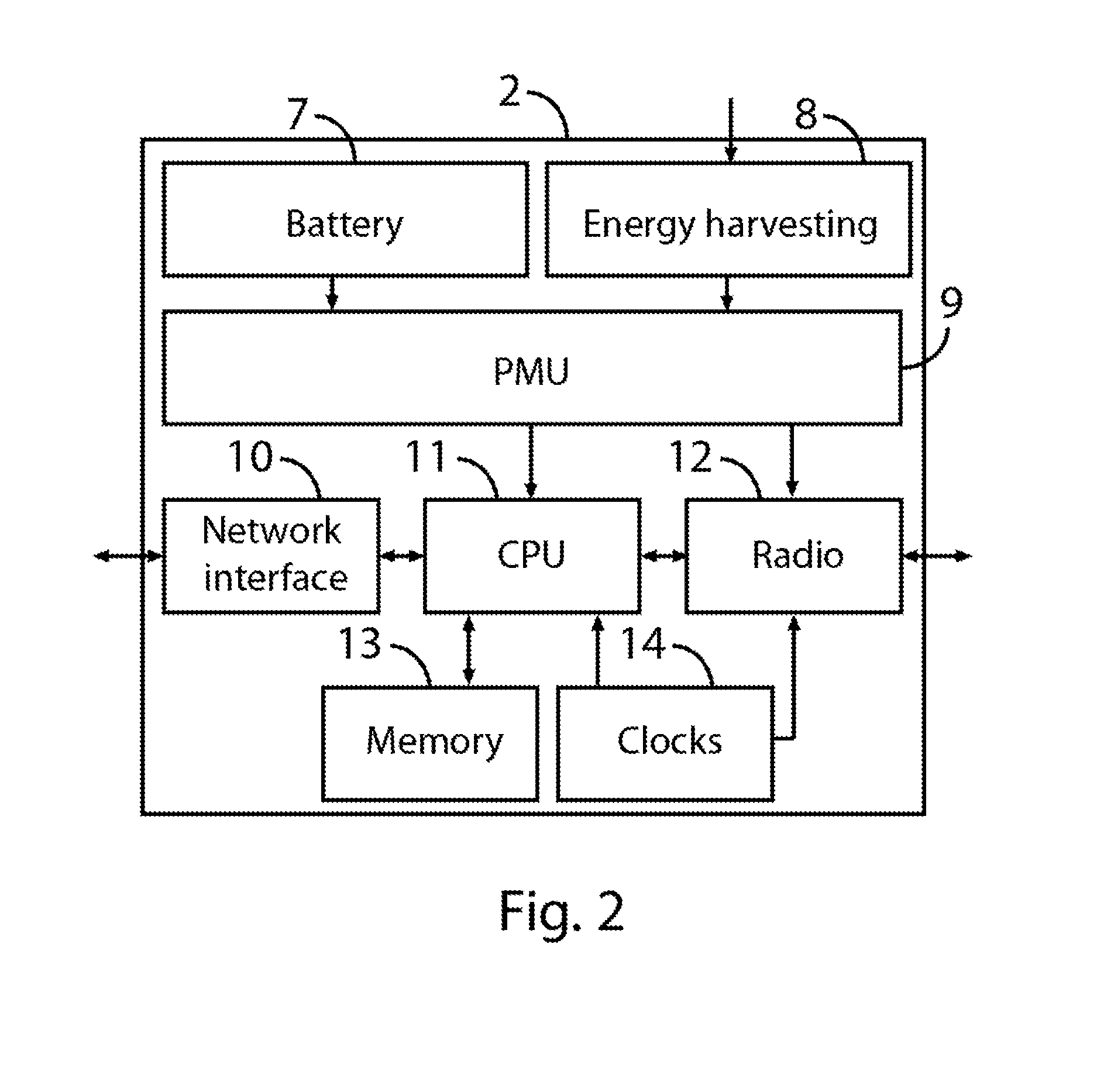Method and apparatus for sending and receiving data in a machine to machine wireless network
a wireless network and wireless network technology, applied in the field of telecommunications, can solve the problems of high traffic load, step-like traffic, and critical communication delays, and achieve the effects of reducing packet collisions, reducing traffic load, and efficient scheduling of turning off radios
- Summary
- Abstract
- Description
- Claims
- Application Information
AI Technical Summary
Benefits of technology
Problems solved by technology
Method used
Image
Examples
Embodiment Construction
[0050]The matters defined in this detailed description are provided to assist in a comprehensive understanding of the invention. Accordingly, those of ordinary skill in the art will recognize that variation changes and modifications of the embodiments described herein can be made without departing from the scope and spirit of the invention.
[0051]Note that in this text, the term “comprises” and its derivations (such as “comprising”, etc.) should not be understood in an excluding sense, that is, these terms should not be interpreted as excluding the possibility that what is described and defined may include further elements, steps, etc.
[0052]FIG. 1 shows a machine to machine communication network operating on a sensing and / or actuation area 1. The network comprises a plurality of gateways 2, each gateway having a certain coverage 3. Within the coverage 3 of each gateway 2, the network comprises a plurality of nodes 4, which actuate and / or measure parameters of the sensing and / or actua...
PUM
 Login to View More
Login to View More Abstract
Description
Claims
Application Information
 Login to View More
Login to View More - R&D
- Intellectual Property
- Life Sciences
- Materials
- Tech Scout
- Unparalleled Data Quality
- Higher Quality Content
- 60% Fewer Hallucinations
Browse by: Latest US Patents, China's latest patents, Technical Efficacy Thesaurus, Application Domain, Technology Topic, Popular Technical Reports.
© 2025 PatSnap. All rights reserved.Legal|Privacy policy|Modern Slavery Act Transparency Statement|Sitemap|About US| Contact US: help@patsnap.com



